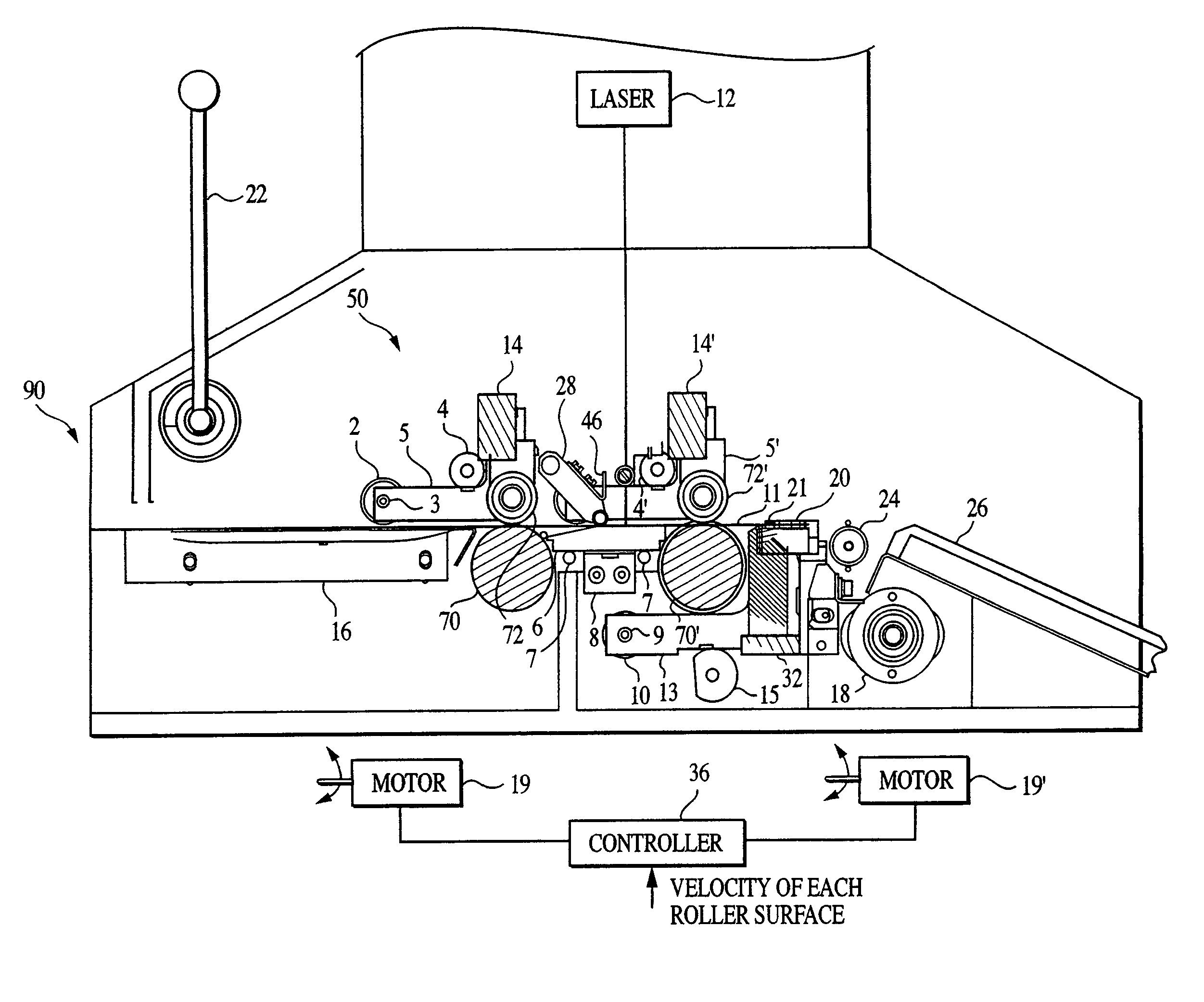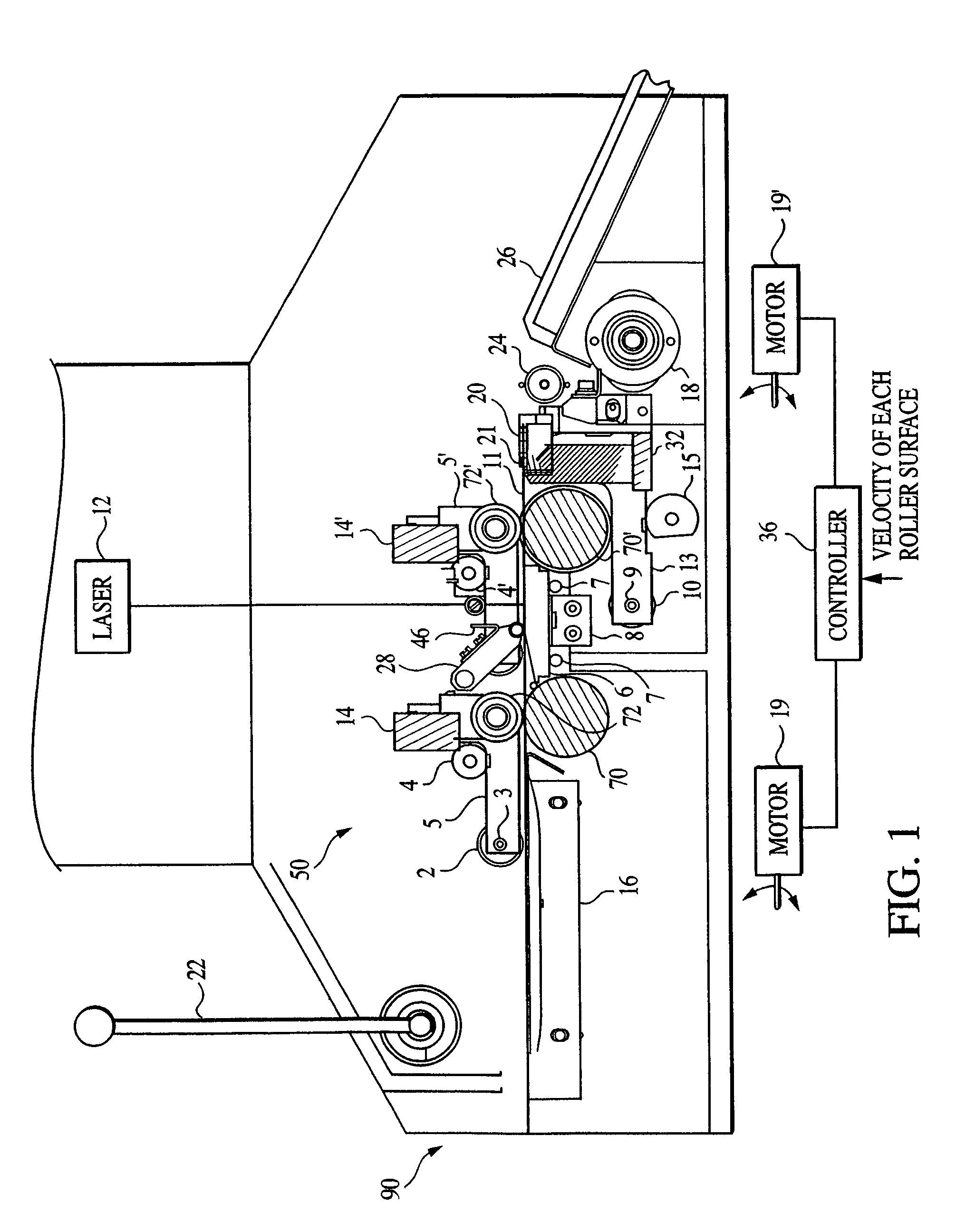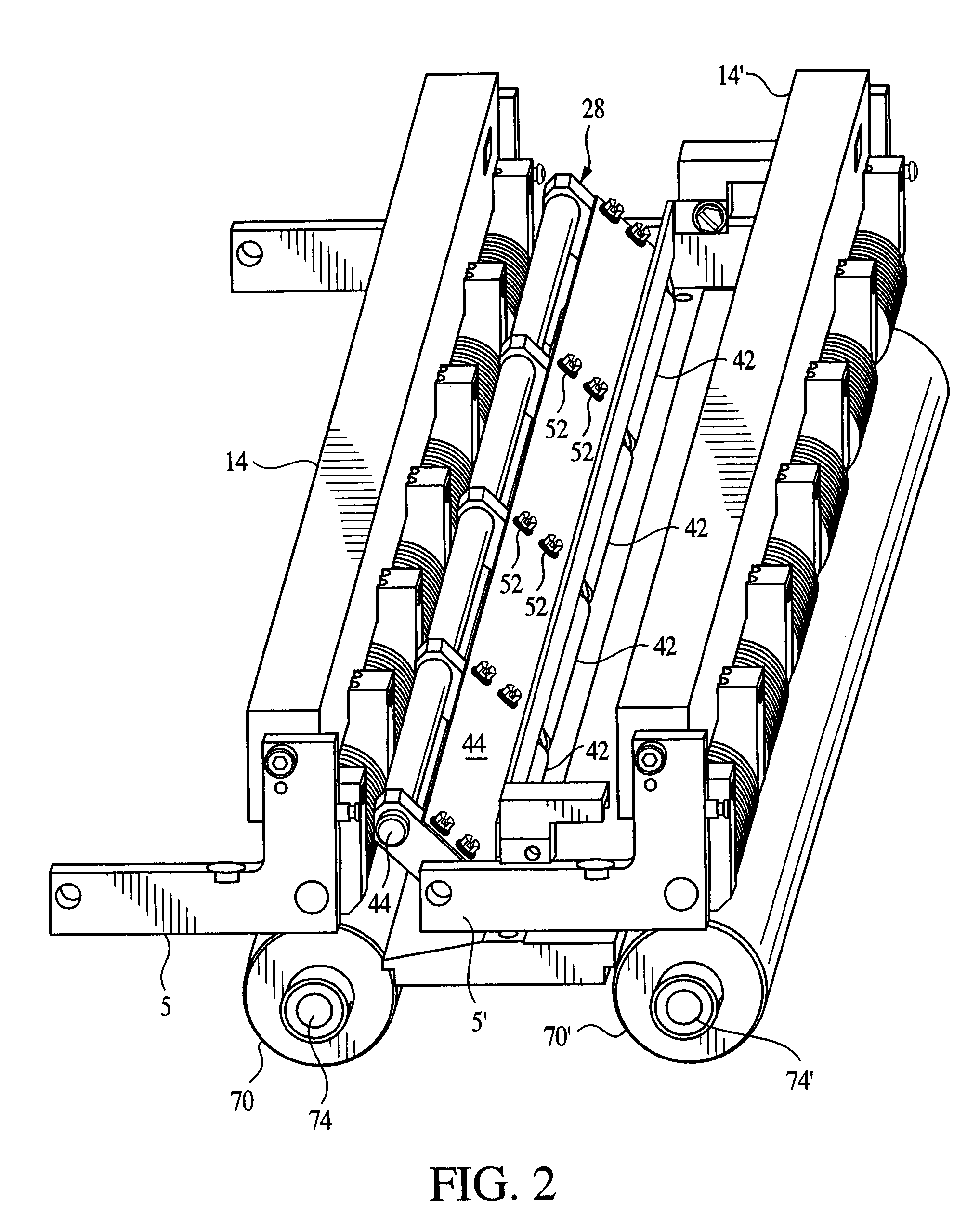System and method for sheet transporting using dual capstan rollers
a technology of plate-type imaging and transporting media, which is applied in the field of transporting media in the imaging system of the plate-type printer, can solve problems such as inefficient use of media, and achieve the effects of reducing media tendency, minimizing or substantially eliminating imaging artifacts, and eliminating imaging artifacts
- Summary
- Abstract
- Description
- Claims
- Application Information
AI Technical Summary
Benefits of technology
Problems solved by technology
Method used
Image
Examples
Embodiment Construction
including the description of a preferred structure as embodying features of the invention will be best understood when read in reference to the accompanying figures wherein:
[0013]FIG. 1 is an elevation view of an exemplary platesetter imaging system embodying the present invention;
[0014]FIG. 2 is an exemplary perspective view of the upper and lower roller arrangement of the platesetter imaging system of FIG. 1;
[0015]FIG. 3A is an exemplary perspective view of the upper roller arrangement of the platesetter imaging system, showing additional details regarding roller arrangement;
[0016]FIG. 3B is an exemplary perspective view of the upper roller arrangement of the platesetter imaging system, showing the use of springs in keeping the rollers in contact with the medium;
[0017]FIG. 4 is an exemplary perspective view illustrating the alignment pins shown in FIG. 1;
[0018]FIG. 5 is an exemplary diagram showing the sequence of operation in transporting a recording medium during an imaging oper...
PUM
 Login to View More
Login to View More Abstract
Description
Claims
Application Information
 Login to View More
Login to View More - R&D
- Intellectual Property
- Life Sciences
- Materials
- Tech Scout
- Unparalleled Data Quality
- Higher Quality Content
- 60% Fewer Hallucinations
Browse by: Latest US Patents, China's latest patents, Technical Efficacy Thesaurus, Application Domain, Technology Topic, Popular Technical Reports.
© 2025 PatSnap. All rights reserved.Legal|Privacy policy|Modern Slavery Act Transparency Statement|Sitemap|About US| Contact US: help@patsnap.com



